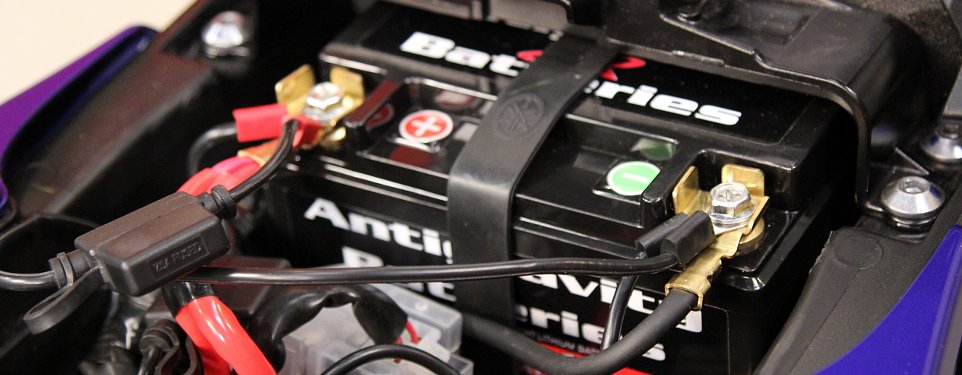As we know, motorcycle batteries are as important as fuel. It’s something that supersedes the overall cost of the product sometimes. Sometimes it’s confusing what you need for your bike. We have tried to collect all the information available for convenience as you don’t feel worried and no one can cheat you regarding the product.
Different types of motorcycle batteries:
1. Wet cell batteries:
This kind of battery has water in it and works as an electrolyte. That’s why it is called a wet cell battery.
Things to consider before buying:
- Cost: It’s cheap compared to other batteries.
- Feature: It has a semi-clear casing. It also has high and low marks on the battery outside. It will help if you put distilled water regularly as the water in the battery tends to evaporate.
- Usability: wet cell batteries are suitable for touring or long distances because of their weight but lacks performance. It also has a spillage problem that you should check before buying.
Feature and benefits:
- Design: These batteries have electrolytes and have two levels lower and upper levels. Wet cell batteries are rechargeable, where sulfuric acid works as electrolytes and lead works as electrodes. It is also called a lead-acid battery because of this. The reason for calling it a wet cell is also because of the electrolyte slosh inside. Check whether your battery has caps by which you can access each cell, then it’s a wet cell battery.
- Modes: Traditional wet batteries are used for starting an engine. The absorption voltage ranges between 14.4 to 14.9 volts, and float voltage ranges between 13.1 to 13.4. There is another kind of wet cell battery in the market that ensures no water spillage and is sealed. The chance of water evaporation also becomes less.
- Maintenance: The maintenance of these batteries is relatively less.
- Other features: they are sturdy in design and can withstand overcharge.
Pros and cons:
- Pros: Less maintenance, relatively cheap. They regulate the gas emissions by the opening of the caps.
- Cons: If the electrolyte touches your skin, it burns. A little bit of mishandling and it can leak easily.
2. Absorbed glass Mat Batteries:
Things to consider before buying:
- Cost: Its pricey than wet cell batteries but affordable
- Feature: They use the same lead-acid, but the liquid is kept between fiberglass sheets.
- Usability: They are quickly taking over the market and can replace ordinary wet cell batteries.
Feature and benefits:
- Design: These kinds of batteries have a pressure-relieving valve. It helps to release the hydrogen out of electrolysis. But the amount of gas expelled is not much like wet cell batteries, so the need for giving distilled water frequently is less.
- Modes: You should not charge the AGM batteries without the original charger as the charging need is low and slow.
- Maintenance: Its maintenance is lower than wet cell batteries and works fully without checking the water level again and again.
Pros and cons:
- Pros: It’s common and easy to find the battery. You don’t need to worry about spillage as the unit is sealed.
- Cons: Though the amount of gas emitted from AGM is minor but toxic, that’s why you need to handle it with complete care.
3. Gel cell batteries:
Things to consider before buying:
- Cost: It’s an expensive battery.
- Feature: Its electrolyte is kept in silica gel and sealed in an airtight container. The lead-acid formula is mixed with Silica gel, which is slightly different in texture.
- Usability: Because of the gel form used in the battery, it will not speed and can be used in sports bikes.
Feature and benefits:
- Design: Its design is more or less like other batteries; the difference is it is stored in silica form gel. It’s also very vibration resistant.
- Modes: The technology used in the battery keeps it automatically cool even in hot weather. These batteries have a higher power-weight ratio, making them more compact than other batteries.
- Maintenance: Because of its superior performance, it has low maintenance properties like no checking levels or filling water in topping up.
- Other features: Like other batteries, it also has a pressure relief valve.
Pros and cons:
- Pros: It’s a good option for any weather as it stays cool. It can be installed in any position, due to which it’s perfect for custom bikes.
- Cons: The electrolyte can be ruined if overcharged.
Final verdict:
It would be best to choose which battery to select for a gel cell battery because of its price point and usability. Though a little bit expensive, the extra safety and experience it gives are worth it. If not, then go for AGM batteries. Your priority for wet cell batteries should be at last.
Though is another kind of battery being famous now, i.e., lithium-ion batteries and as it is new technology and very expensive you should refrain from buying it. Apart from the price you should also consider the safety purpose. Even in that zone, the gel cell battery is a clear winner.






